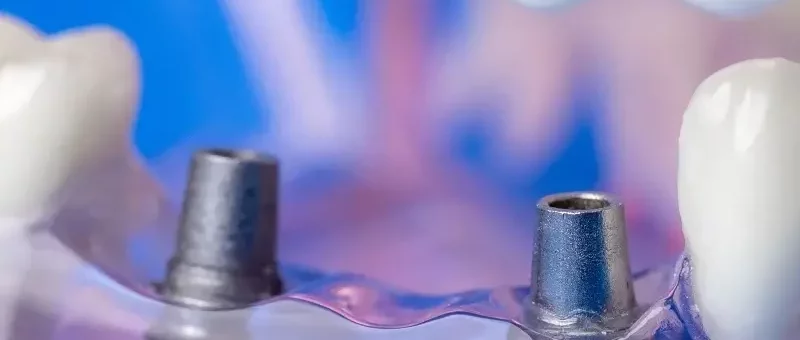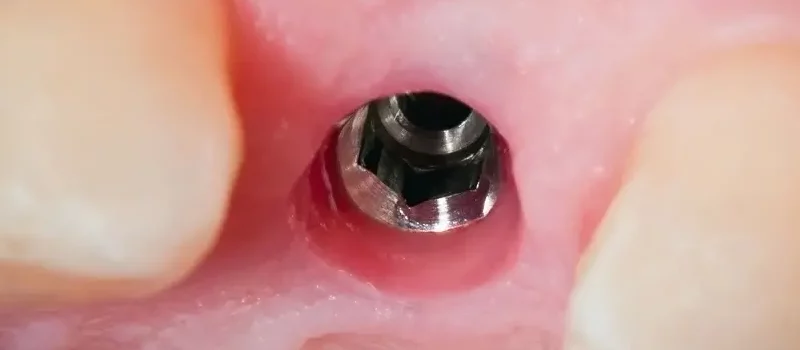Last Updated on: 8th December 2025, 11:22 am
In this article, we will tell you everything about the different types of dental bridges and the factors to consider when choosing a dental bridge. According to the American College of Prosthodontics, at least 120 million Americans are missing at least one tooth, and these numbers are expected to increase in the next two decades.
The loss of one or more teeth can significantly affect the quality of life, not only due to the impact on the chewing function but also due to the negative effect it has on the aesthetic appearance of the smile. Dental bridges are a common and effective solution to replace missing teeth and restore the functionality and aesthetics of the mouth.
What is a Dental Bridge?
A dental bridge is a fixed dental prosthesis used to replace one or more missing teeth, allowing the restoration of the chewing function and improving the appearance of the smile. It is composed of artificial teeth, called “pontics,” which are supported by structures called “abutments” or “anchor teeth,” which can be natural teeth or dental implants. Learn more about dental crowns and dental bridges in this comprehensive guide.
Types of Dental Bridges
1. Traditional fixed bridges
Also known as fixed bridges, they are the most common and consist of one or more pontics supported by natural abutment teeth that have been shaped and prepared to receive the bridge. The abutment teeth are covered with dental crowns that serve as support for the bridge.
Traditional bridges are durable and provide good chewing function, but they require shaping of the anchor teeth, which can be a disadvantage in some cases. This type of bridge is often a good option when the teeth that will be used as abutments have cavities or large dental restorations.
2. Cantilever bridges
They are similar to traditional bridges, but they only have one abutment tooth at one end of the bridge. This makes them less stable and used less frequently compared to traditional bridges. However, they are a viable option in some specific clinical situations, especially when it is necessary to replace the posterior molars.
3. Maryland bridges
Also known as resin bridges or adhesive bridges, they are a less invasive option since they do not require shaping of the abutment teeth. Instead, they use a metal or ceramic framework that adheres to the back of the teeth adjacent to the space of the missing tooth. Maryland bridges are less durable than traditional bridges, but they are an aesthetic and conservative option.
4. Implant-supported fixed bridges
They are fixed bridges that use dental implants as abutments instead of natural teeth. Dental implants are metal structures similar to screws, surgically placed in the jawbone or maxilla. Implant-supported bridges are a very durable option and provide excellent chewing function, but they are also more expensive and require a surgical process for the placement of the implants. Learn more about the process of dental implants right here.
Materials used in the Manufacture of Dental Bridges
The material chosen to make a dental bridge influences its strength, aesthetics, and the amount of structure to be worn on the abutment teeth. There are dental bridges made of various materials, including:
• Metallic: Made entirely of gold or other metals, they are strong and durable, but not very aesthetic, so they are rarely used.
• Ceramics: They are widely used on front teeth since they mimic the shape of natural teeth and can go completely unnoticed. They can be traditionally made in two appointments or a single appointment, through computer-aided design and 3D printing (CAD/CAM). However, some ceramics are not as strong as metal bridges, so they may pose a problem for patients with bruxism.
• Ceramic bonded to metal: They have a metal base (which provides strength) covered with a layer of ceramic (which enhances aesthetics).
Factors to Consider when Choosing a Dental Bridge
As mentioned earlier, there are different types of dental bridges, each with its advantages and disadvantages in terms of cost, durability, appearance, and maintenance requirements. It is important to discuss with your dentist which type of dental bridge is most suitable for your specific case, taking into account your needs and budget. Thus, when choosing a dental bridge, several important factors should be considered:
1. Number of missing teeth
There is an ideal maximum extension of dental prostheses and a minimum number of abutment teeth required to ensure that the dental bridge behaves properly. That is, if bridges are made too long without enough supporting teeth, the bridge could fracture or bend, or worse, the abutment teeth could be damaged due to excessive force. Therefore, when too many teeth need to be replaced and there are not enough abutment teeth, the use of implant-supported bridges is usually recommended.
2. Evaluation of oral health
A dentist must evaluate the patient’s mouth before recommending a dental bridge because, in some cases, a dental bonding would suffice. This may include the health of neighboring teeth, gums, and jawbones. It should also be considered whether there is a need for any prior treatment, such as dental cleaning, gum, or root canal treatment, before placing the bridge. In the case of traditional, cantilever and Maryland bridges, the abutment teeth and their supporting tissues must be in very good condition, as otherwise, they could be negatively affected.
3. Cost
The price of dental bridges may vary depending on the type of bridge, the number of teeth to be replaced, the materials used, the geographical location, and the dentist’s experience. Implant-supported bridges tend to be the most expensive, as are those made of ceramic or zirconia. It is important to obtain a detailed estimate provided by the dentist and understand the associated costs, including the preparation of abutment teeth, the production of provisional prostheses, possible root canal treatment, bridge fabrication, and possible long-term maintenance costs.
4. Durability
The durability of a dental bridge is a key factor. Traditional bridges and implant-supported bridges tend to have greater durability compared to Maryland or cantilever bridges. The lifespan of a traditional bridge can vary between 5 and 10 years, depending on proper care and maintenance. It is important to consider the quality of the materials used and the technique of placing the bridge to ensure that it is durable and functional in the long run.
5. Appearance
The aesthetic appearance of a dental bridge is another factor to consider, especially if the bridge is located in a visible area of the mouth. Dental bridges can be made of different materials, such as ceramic, metal, or porcelain fused to metal, and their appearance may vary in terms of color, shape, and size. It is important to discuss with your dentist about material options and the appearance of the dental bridge to ensure it meets your aesthetic needs.
When bridges are required on the front teeth, materials such as zirconia or ceramic are usually preferred, as metal-ceramic bridges can have more opaque colors or leave a small dark line at the junction between the prosthesis and the tooth.
6. Maintenance
Proper maintenance of the dental bridge is essential to ensure its durability and long-term function. Dental bridges require good oral hygiene, including brushing, flossing, and professional cleanings every 6 months. While decay does not attack dental bridges, it can severely damage the pillar teeth, causing loss of the bridge. Similarly, if there are poor hygiene habits, the gum and bone may be affected, compromising the support of the pillar teeth. Therefore, the patient’s dexterity and the possibility of performing proper dental bridge hygiene are important factors to consider.
Conclusion
Dental bridges are a popular option for replacing missing teeth and restoring the function and appearance of the mouth. There are various types of dental bridges available that can be tailored to meet all needs and budgets.
Share:
References
1. Dental bridges. (Ene, 10, 2020). Cleveland Clinic. Recuperado el 5 de abril de 2023, de https://my.clevelandclinic.org/health/treatments/10921-dental-bridges
2. Frothingham, S. (Jun, 13, 2018). Dental bridge. Healthline. https://www.healthline.com/health/dental-bridge
3. American College of Prosthodontics. (2001). Facts & figures. American College of Prosthodontics. https://www.gotoapro.org/facts-figures/
4. Bridges. (s/f). Mayodentalclinic.com. Recuperado el 5 de abril de 2023, de https://www.mayodentalclinic.com/services/restorative/bridges/
5. American Dental Association (ADA) Division of Science. (2015). FOR THE PATIENT. Bridges, implants, and dentures. Journal of the American Dental Association (1939), 146(6), 490. https://doi.org/10.1016/j.adaj.2015.04.004
6. Bridges. (s/f). Mouthhealthy.org. Recuperado el 5 de abril de 2023, de https://www.mouthhealthy.org/en/az-topics/b/bridges
7. Dental bridge vs implant. (s/f). Yoursmilebecomesyou.com. Recuperado el 5 de abril de 2023, de https://yoursmilebecomesyou.com/procedures/cosmetic-dentistry/implants-versus-bridges-usa
-
DDS Juliana Garzon [Author]
Dr. Juliana Garzón Ariza Endodontics Specialist | Passionate Advocate for Oral Health Transformation Graduating from the esteemed Universidad Nacional de Colombia in 2021, I am a dentist and a final-year resident specializing in Endodontics. My professional mission is to transform oral health through prevention, highly specialized treatments, and patient education. With a strong focus on dental research, I am driven to innovate solutions in critical areas such as dental pain, infections, dent...
View all posts
-
Nayibe Cubillos M. [Medical Reviewer]
Pharmaceutical Chemestry |Pharmaceutical Process Management | Pharmaceutical Care | Pharmaceutical Services Audit | Pharmaceutical Services Process Consulting | Content Project Manager | SEO Knowledge | Content Writer | Leadership | Scrum Master
View all posts
A healthcare writer with a solid background in pharmaceutical chemistry and a thorough understanding of Colombian regulatory processes and comprehensive sector management, she has significant experience coordinating and leading multidisciplina...




















